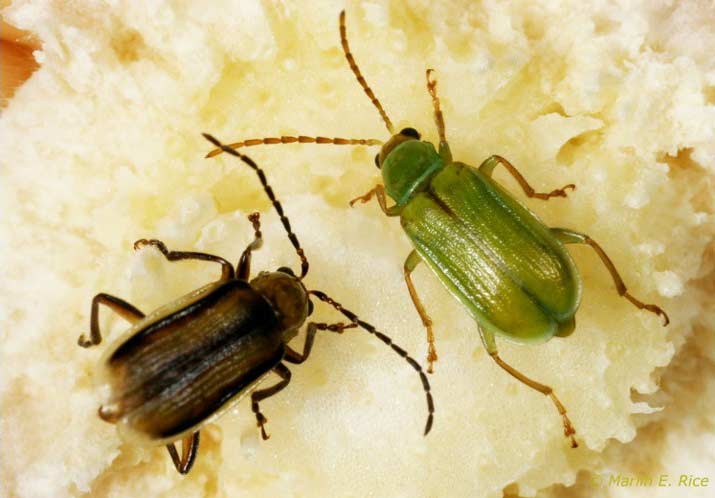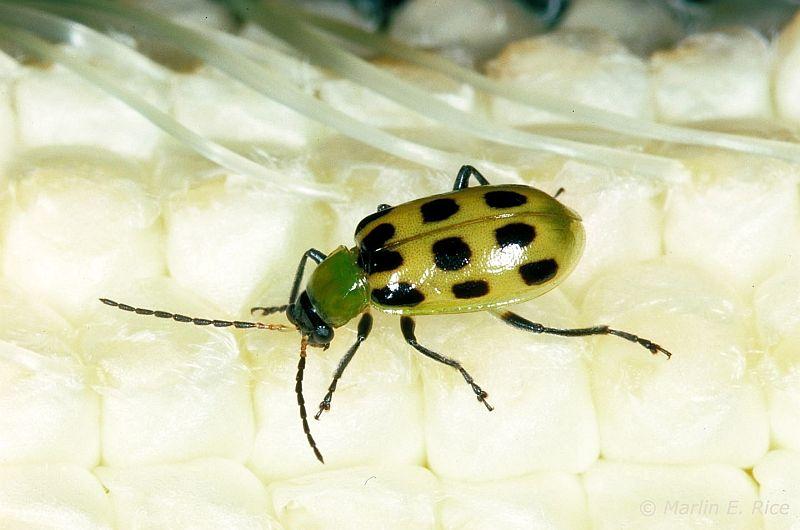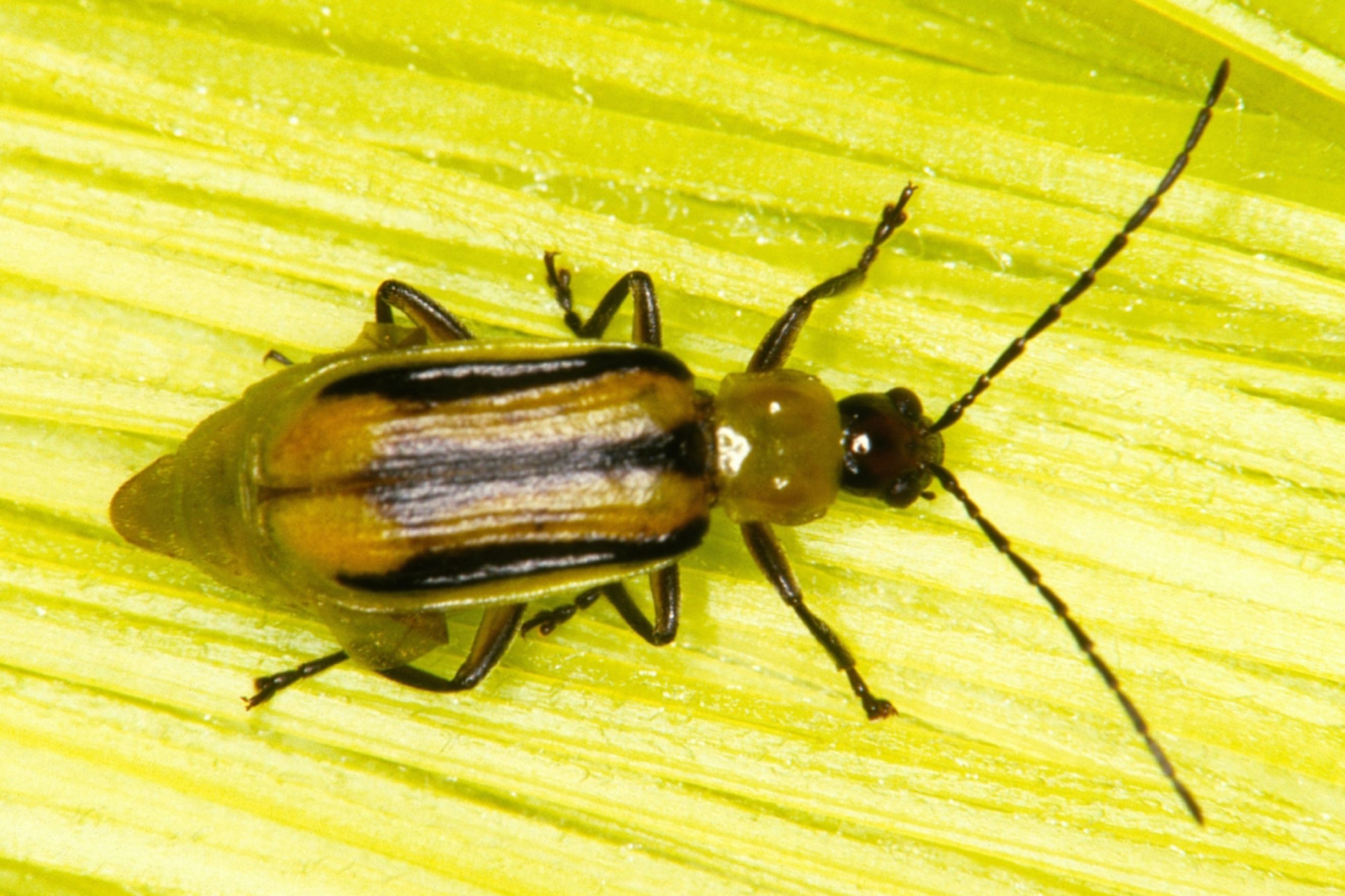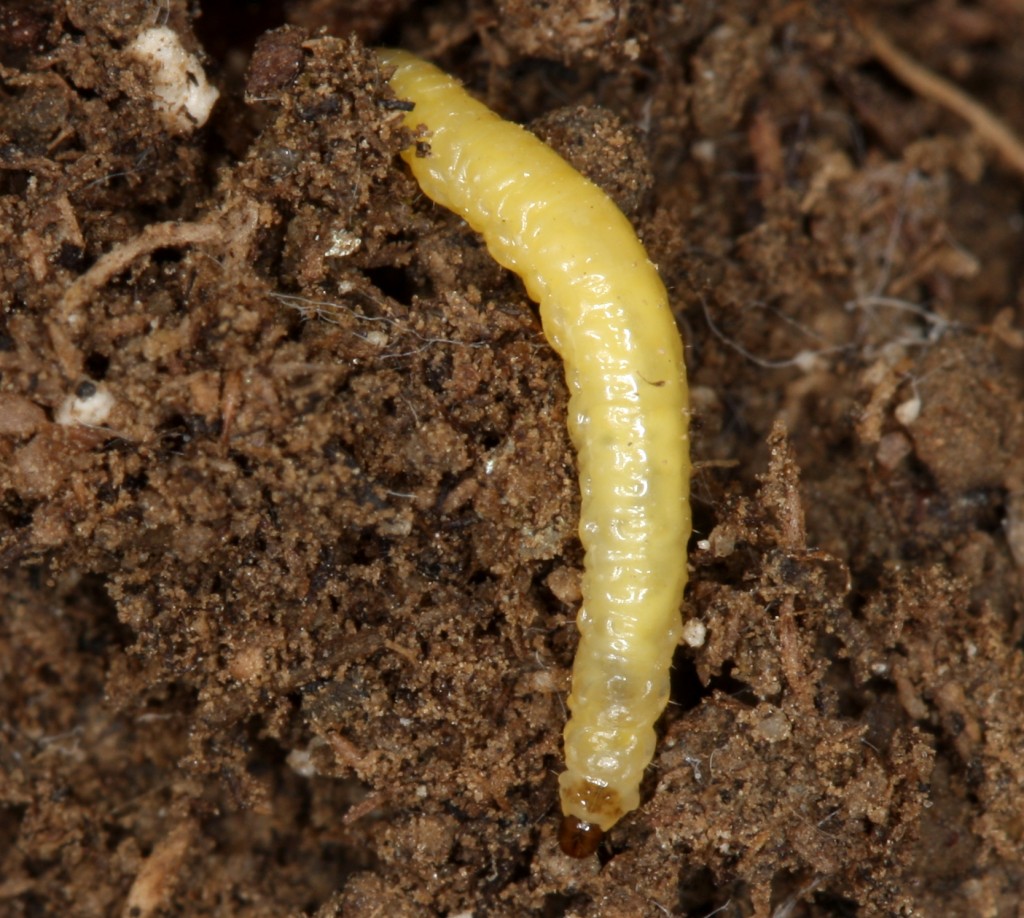Corn Rootworms
|
Adult northern corn rootworm. |
Northern Corn RootwormDiabrotica barberi Northern corn rootworm adults are about ¼-inch long and pale green in color, although there also occur in yellow, tan and mucher darker forms. When viewed from above, they have a darker stripe along the margin of each wing cover. Mature rootworm larvae are white and slender, about ½ inch long, with brown heads and a dark plate on the top side of the terminal segment. |
Southern Corn RootwormDiabrotica undecimpunctata howardi Southern corn rootworm adults are about 3/8 inch long and have 12 black spots on a chartreuse background. This species is normally of little concern in Kansas corn, because their eggs do not overwinter at this latitude, although adults are commonly seen. |
Adult southern corn rootworm. |
|
Adult western corn rootworm. |
Western Corn RootwormDiabrotica virgifera Western corn rootworm adults are about the same size as northerns or slightly larger. Westerns frequently have a dark stripe extending part way up the center of the wing covers.
Western corn rootworm larva. |
Significant rootworm problems in Kansas usually occur in fields continuously planted to corn, and are typically caused by western corn rootworms. Larvae cause damage by pruning corn roots and tunnelling within them. Severe damage will cause the plants to lodge or lean over, reducing the ability of the leaves to harvest sunlight and the plant’s ability to tolerate moisture stress and access. Research indicates that rootworm-infested corn that lodges will yield less than similarly infested corn that does not lodge.
Occasionally, rootworms cause problems when corn follows weedy soybeans, or soybeans infested with volunteer corn that persisted through July, as these situations can elicit adult beetles to lay eggs in the field in fall. In some upper Midwestern states, rotation with soybeans has been a cultural strategy for reducing rootworm populations, but some northern corn rootworms have evolved eggs that remain dormant for two winters before hatching, thus reconnecting with their host plant in the next rotation cycle. Another form of 'rotation resistance' occurs when adults lay eggs in soybean fields in late summer that hatch the following spring when corn is now in the field. However, these phenomena have not been reported in Kansas, and crop rotation still works well as part of an integrated management strategy. Western corn rootworms, by far the state’s most significant species, are generally not known to lay many eggs in non-corn fields.
Management
Rootworm insecticides are rarely necessary in first year corn fields. Rootworms are less problematic in sandy soils, and in southeast Kansas, south of U.S. Highway 54. Previous year counts of adult beetles can be used to estimate the likelihood of economic damage and the need for insecticide protection the following growing season. Insecticides are best applied before rootworm damage has become severe (mid-May through mid-June), sometimes before or close to egg hatch. Adequate precipitation or soil moisture must be available to move the products into the rootworm feeding zone, and control may be improved by cultivating the insecticide into the soil. Some materials are registered for chemigation. A number of corn hybrids are now available that express Baccilus thuringiensis (Bt) traits in the roots which can reduce corn rootworm damage. However, the protection afforded is generally not as effective as that of Bt traits targeting stalk borers, so corn growers should still employ supplementary management tactics such as crop rotation.
Silk Clipping
Adult beetles may prevent pollination by clipping corn silks before pollen is shed, but clipping after pollination does not affect yield. Foliar spray treatments may be justified if there are eight to 10 beetles per plant and 10 percent of the silks are beginning to show.
Please refer to the most recent version of the Corn Insect Management Guide for control recommendations.
Last updated 3/29/2024 by J.P. Michaud



